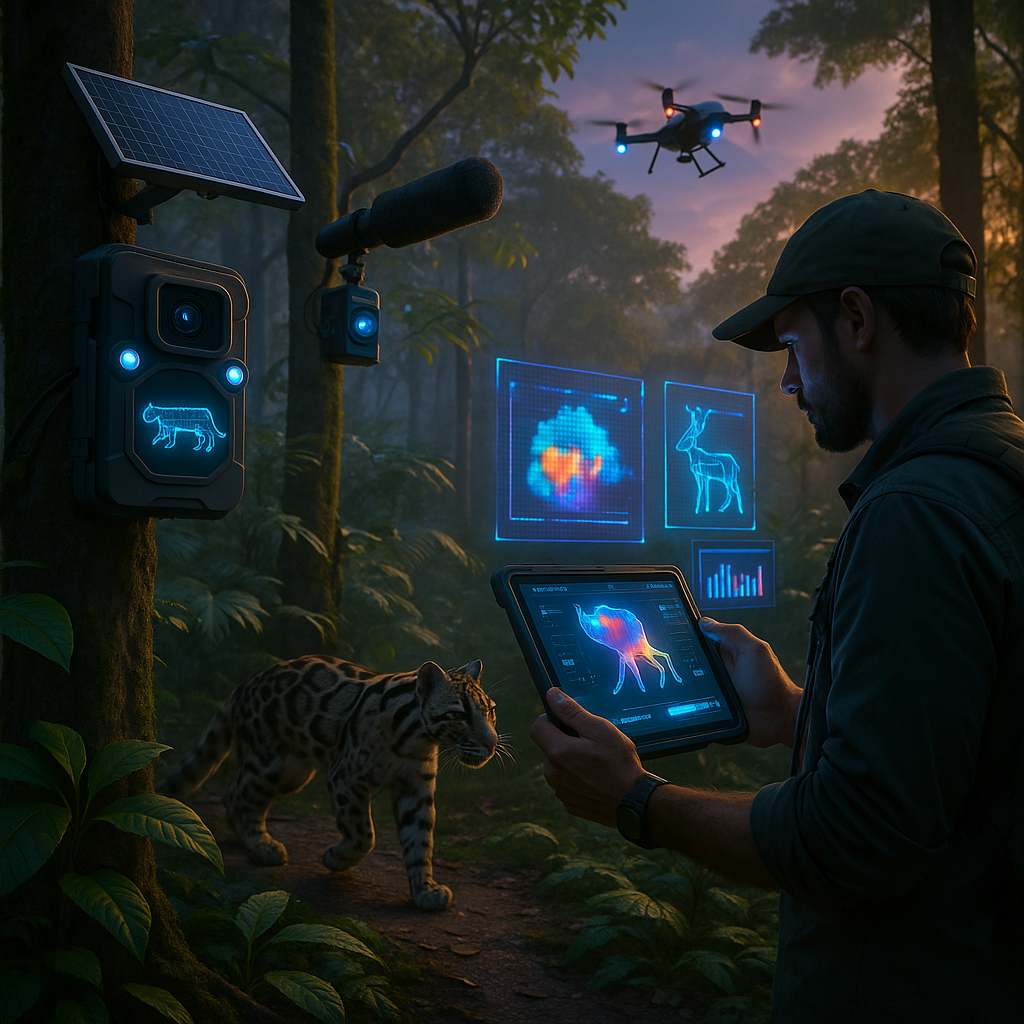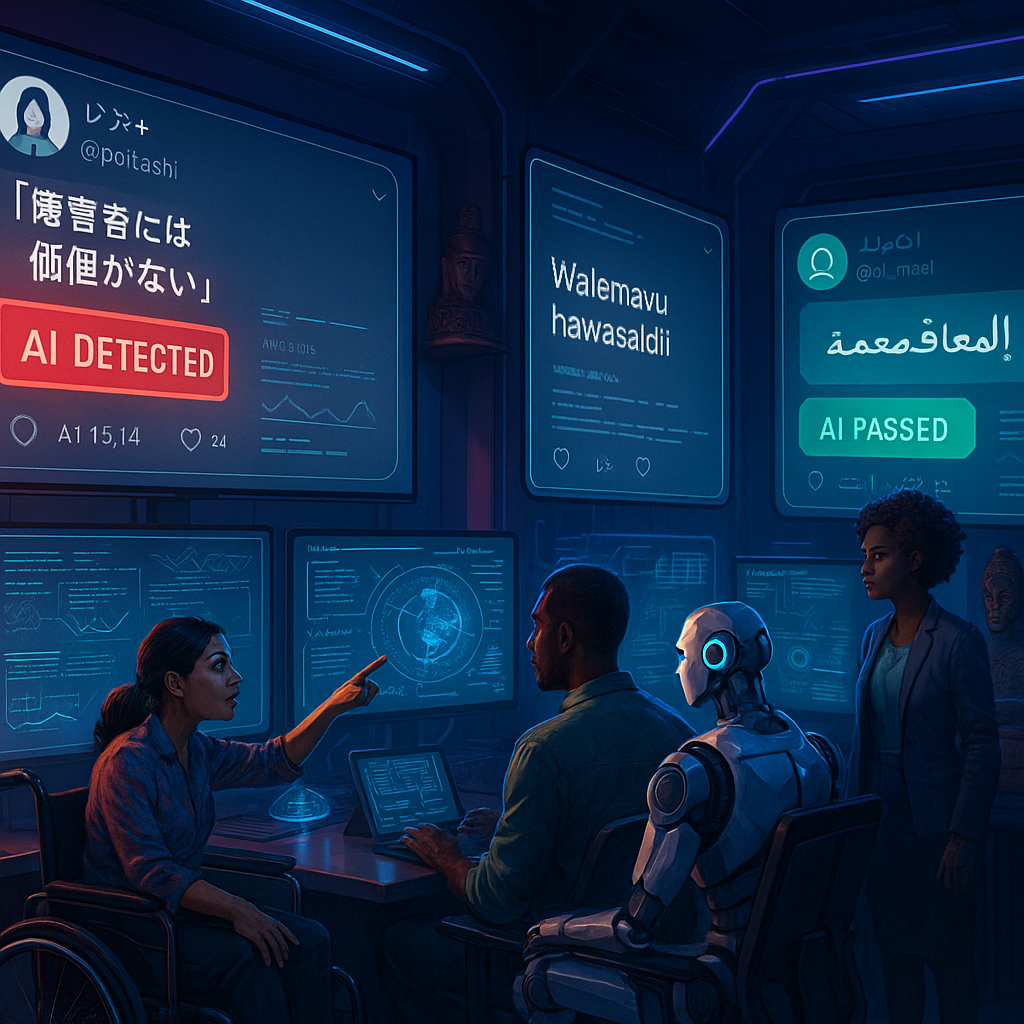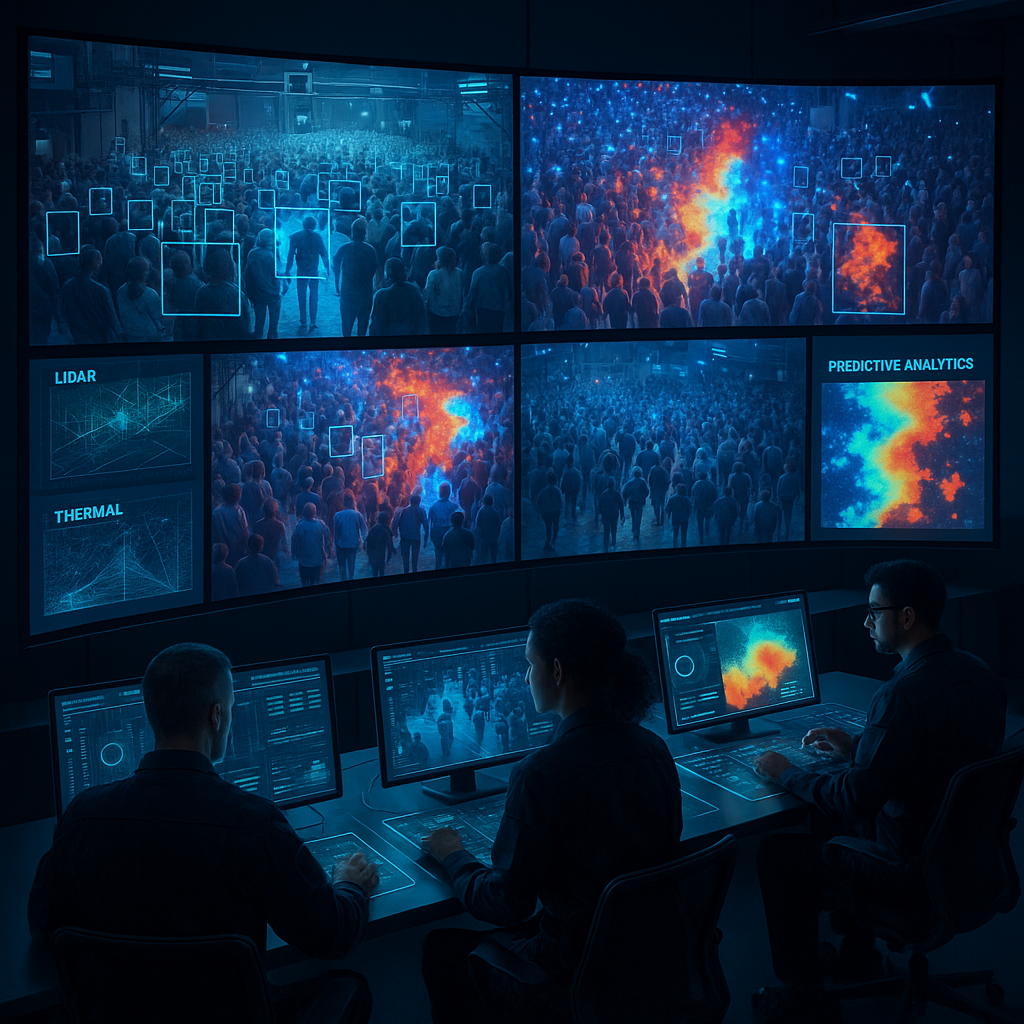Key Takeaways
- AI unleashes unprecedented ecological surveillance. Advanced algorithms analyze data from camera traps, satellites, and acoustic sensors, detecting rare or elusive species with a speed and accuracy that surpass human abilities.
- Species at risk receive smarter, more targeted protection. By analyzing habitat patterns and migration trends, AI pinpoints threats such as poaching or habitat loss in time to inform direct conservation actions.
- Large-scale monitoring becomes efficient and sustainable. Automated analysis makes broad ecosystem assessments possible, reducing the burden on human experts and lowering operational costs.
- Real-time insights enable adaptive conservation strategies. The capacity of AI to interpret live data streams means conservationists can respond dynamically to changes, such as sudden climate events or rapid disease outbreaks.
- Biodiversity research is democratized. Open-source AI tools now empower scientists, citizen scientists, and conservationists across the globe to collaborate, accelerate discovery, and bridge gaps in expertise.
- AI compels a philosophical reassessment of our place in nature. By exposing hidden ecological patterns and interconnections, artificial intelligence prompts profound questions about stewardship, responsibility, and the boundaries between observer and ecosystem.
As we venture further into the era of AI-enhanced conservation, we are challenged to unpack novel technologies, navigate ethical dilemmas, and recognize the sweeping possibilities that lie at the crossroads of human ingenuity and the natural world.
Introduction
A hidden songbird calls out in the dense rainforest, its melody too soft and brief for even the most attentive researcher to catch. Yet, through AI-powered biodiversity monitoring, these elusive sounds are captured and identified instantly, as algorithms train their attention on the intricate symphony thriving in Earth’s ecosystems.
Artificial intelligence is revolutionizing species monitoring and conservation efforts. By deciphering patterns in vast and unruly datasets from camera traps, satellite feeds, and acoustic sensors, these “alien minds” amplify what is possible. They unlock actionable insights and enable protections well beyond the limits of traditional fieldwork. From precision threat detection to building global research networks, AI pushes the boundaries of how we understand and safeguard the tapestry of life.
The intersection of AI and conservation invites us to rethink our relationships with all living beings, positioning humans not merely as observers, but as adaptive stewards. Let’s delve into the ways artificial intelligence is redefining our role as caretakers of biodiversity.
Stay Sharp. Stay Ahead.
Join our Telegram Channel for exclusive content, real insights,
engage with us and other members and get access to
insider updates, early news and top insights.
 Join the Channel
Join the Channel
AI-Powered Species Monitoring and Data Collection
Advanced Sensing Technologies
The fusion of AI with next-generation sensing systems has fundamentally changed the scale and accuracy of wildlife observation. Leveraging deep learning algorithms alongside high-resolution cameras and sensitive acoustic sensors, conservationists identify individual animals with remarkable precision. Platforms like the Wildbook project use AI to recognize zebras by their unique stripe patterns, achieving a 95% identification accuracy and reducing analysis time from weeks to mere hours.
Remote monitoring solutions have evolved far beyond simple motion triggers. These intelligent systems can distinguish between different species, track complex movement patterns, and even anticipate shifts in behavior. They operate around the clock in locations ranging from thick jungles to frozen tundras, collecting data that would remain inaccessible to human observers.
Cutting-edge innovations such as AI-enhanced thermal imaging are particularly vital for nocturnal wildlife. In the rainforests of Malaysia, conservationists using AI-guided thermal cameras have documented a 300% increase in rare species detections, uncovering previously unknown populations of endangered clouded leopards. Similarly, in marine environments, AI-powered sonar and video analysis are revolutionizing the monitoring of elusive fish species and marine mammals.
Real-Time Data Processing and Analysis
Modern conservation generates immense volumes of data, often too vast for manual interpretation. AI solutions rapidly transform this raw information into actionable intelligence. The Smart Parks initiative in Africa illustrates this capacity, where AI algorithms integrate multi-sensor feeds to spot poaching threats or track herd movements in real time, supporting immediate intervention when needed.
Advances in machine learning allow subtle environmental shifts (such as habitat degradation or population fragmentation) to be detected earlier than ever. For example, AI monitoring the Great Barrier Reef can process hours of underwater video and identify early-warning signs of coral bleaching weeks before these become visible to divers, enabling timely remediation and policy intervention.
In other ecosystems, AI-powered drones and satellites provide round-the-clock surveillance, feeding data directly into dashboards where conservationists can watch for illegal deforestation or sudden changes in water quality.
Automated Species Classification
Sophisticated neural networks have reshaped species identification and cataloging by achieving high accuracy, even with low-resolution images or poor lighting. These algorithms can tell apart visually similar species, making it possible to track threatened birds in dense forests, rare amphibians in polluted wetlands, or urban wildlife navigating evolving cityscapes.
Beyond terrestrial applications, advancements in bioacoustics and pattern recognition have made it possible to classify frog calls in tropical swamps, whale songs across ocean basins, and insect populations in agricultural landscapes. This explosion of data and improved classification enhances our ability to benchmark biodiversity and spot concerning trends before they escalate into crises.
Predictive Analytics for Conservation Planning
Habitat Loss Prevention
Artificial intelligence is now at the forefront of predicting and mitigating habitat loss. By analyzing satellite images, remote sensor data, and climate models, AI systems identify vulnerable regions, sometimes months in advance of detectable deforestation or environmental degradation. The Global Forest Watch initiative incorporates machine learning to provide early warnings, helping to reduce illegal logging by 40% in protected forests with timely alerts to local authorities.
Cross-referencing weather trends, land-use maps, and human development activity, these algorithms offer unprecedented granularity. Conservationists deploy targeted reforestation efforts, policymakers strengthen land protection measures, and local communities engage in quicker, more informed responses.
In the agricultural sector, predictive models help farmers measure the ecological impacts of land use, guiding practices that balance food production with conservation objectives. Similarly, in urban planning, AI-powered forecasts inform the creation of green corridors and the management of sensitive habitats.
Population Dynamics Modeling
Our understanding of species populations and their ecological relationships is being reshaped by AI-driven modeling. Systems can now simulate entire ecosystems, projecting the ripple effects that changes in one population might have on others. In the Serengeti, AI-assisted analyses of wildebeest migration have led to more targeted predator management and habitat preservation strategies.
Neural networks excel at uncovering invisible patterns. An AI system analyzing whale song data revealed unknown seasonal migrations, prompting authorities to adjust shipping routes and halve the risk of ship strikes. In freshwater environments, similar models track fish populations in rivers and lakes, predicting the impacts of water pollution or climate variations on food webs and community health.
Such predictive tools are also being used in medicine and public health. For instance, AI models forecast outbreaks of vector-borne diseases (like malaria or dengue) by tracking shifting wildlife and insect populations in response to environmental changes, directly informing healthcare resource allocation and preventative actions.
Challenges and Ethical Considerations
Technical Limitations
Despite its promise, AI-based biodiversity monitoring faces notable hurdles. Harsh or variable environmental conditions can undermine sensor reliability, and AI models trained in one region or season may falter when faced with new data. The Amazon Rainforest Monitoring Project reported significant retraining needs when transitioning equipment and models from dry to wet seasons.
Hardware durability, frequent maintenance, and the need for remote energy sources pose logistical complications in rugged environments. Many projects must blend automated tools with traditional approaches, relying on local expertise to calibrate, interpret, and validate AI outputs.
Stay Sharp. Stay Ahead.
Join our Telegram Channel for exclusive content, real insights,
engage with us and other members and get access to
insider updates, early news and top insights.
 Join the Channel
Join the Channel
Issues of data bias and representativeness persist, as algorithms built on incomplete datasets may overlook less-studied regions or underrepresented species, reinforcing existing knowledge gaps. Addressing these limitations requires continued collaboration between technologists, ecologists, and local communities.
Privacy and Environmental Impact
Widespread deployment of AI in wild habitats raises poignant ethical questions. Constant monitoring tools, even when intended for good, risk disturbing animal behaviors or altering natural patterns. On the Galapagos Islands, for instance, researchers observed shifts in sensitive species’ breeding behaviors due to the presence of monitoring devices.
There are also environmental costs to consider. AI platforms can consume significant energy, especially when dependent on high-powered computation or cloud connectivity. Progressive conservation groups are adopting solar-powered and edge-computing solutions to reduce carbon footprints, but the balance between ecological benefit and technological impact remains a central concern.
Furthermore, issues around data governance and equitable access require attention. While open-source AI can empower local researchers and citizen scientists, disparities in digital infrastructure and technical capacity risk perpetuating existing divides between well-resourced and underserved regions.
These practical and ethical challenges shape the evolving landscape of AI-powered conservation. Maintaining ecological sensitivity while leveraging technological progress will define the success of these endeavors.
Conclusion
Artificial intelligence is fundamentally reshaping species monitoring, ecosystem management, and conservation strategy. The rise of AI-augmented surveillance, sophisticated modeling, and real-time analytics has given researchers the power to observe, understand, and protect biodiversity with a scope and acuity previously unattainable. Whether it is AI-powered cameras discovering undiscovered feline populations, neural networks forecasting the fate of coral reefs, or open-source platforms democratizing global research collaboration, the impact of artificial intelligence is undeniable.
Yet, these breakthroughs also demand a deeper reckoning with both technical challenges and ethical trade-offs. Progress must be coupled with humility and responsibility, ensuring that the digital minds we deploy enhance, rather than disrupt, the living systems we aim to protect.
Looking to the future, the real opportunity lies not in building the smartest algorithm, but in cultivating a meaningful partnership between technology and the natural world. By combining data-driven insight, philosophical inquiry, and cross-disciplinary cooperation, we have the chance to redefine stewardship for the twenty-first century.
The next chapter of conservation will be written by those willing to embrace innovation while honoring the delicate balance of life on Earth. The question that remains is not whether we will use these tools, but how thoughtfully and equitably we will wield them, to both reveal nature’s mysteries and preserve its wonders for generations to come.





Leave a Reply